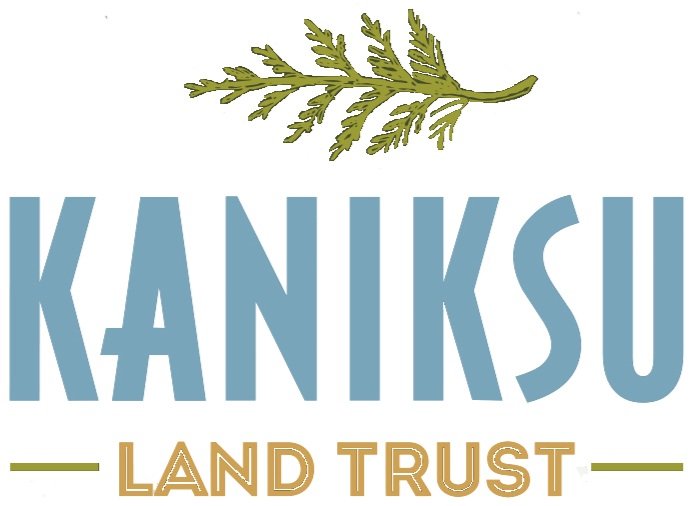Group aims to help Monarchs soar
Members of the Mighty Monarchs pause for a quick picture after planting milkweed at the Pine Street Woods as part of an effort to attract more Monarch butterflies.
(Photo courtesy KANIKSU LAND TRUST)
By MARCY TIMBLIN / Contributing Writer - Bonner County Daily Bee
| October 28, 2023 1:00 AM
SANDPOINT — When Gail Bolin presented a talk on the declining numbers of Monarch Butterflies at the East Bonner County Library last winter, she would have never guessed that she was starting a movement.
Inspired by the presentation, a group of community members have come together to share knowledge and create space for one of the most dramatically threatened wildlife species - the Monarch Butterfly.
(Photo: PIXABAY)
Immediately following that library program, where nearly 100 people were in attendance, Amy Anderson, De Trenbeath, Perky Hagadone, and Gail began forming a list of people who are interested in restoring Monarch populations in the area. The following week, Amy, who is the Executive Director of the Selkirk Conservation Alliance, set up a Zoom call to develop action points and priorities.
Priority No. 1 was to provide a food source for the butterflies in order to attract them along their migratory route. Monarchs exclusively eat milkweed, which has been depleted nationwide due to development and other factors.
“The food source is critical,” alerted De. “Our group determined that starting milkweed way stations (at least 10 plants and a nectar source) was the first priority.”
“It takes at least one milkweed plant per caterpillar for their lifecycle,” Perky continued.
(Photo: PIXABAY)
Last spring, volunteers who had attended the library program created seven planting pads for butterfly habitat at Pine Street Woods. The group reconvened in early October to plant seeds and Milkweed starts with the goal of attracting Monarchs.
“We have plants, rhizomes, and seeds. Each patch gets some of each of the three. It’s an experiment, like so many things,” one volunteer explained. “None of us have that much experience. We’ve taken classes from experts, which sometimes results in conflicting advice. So, we plant with the best of our knowledge and just see where the magic happens.”
At Pine Street Woods, much thought went into where to put the planting pads, considering the sun exposure, moisture levels, and where the plants would be undisturbed by trail users. Three pads were planted in the meadow along the Butterfly Trail and four are located near the Frog Pond at Pine Street Woods.
“I predict better success there [by the pond] because of the sun exposure and moisture. But, we will see next year,” a volunteer concluded.
Now known as The Mighty Monarchs, the group has met monthly since Gail’s library talk and it continues to grow. The next priority was to seek out people who grow milkweed and raise Monarchs in the local area. They have begun to develop a network of individuals with the same goal of attracting Monarchs.
“There are a lot of people who grow milkweed [for Monarchs] around here,” observed Perky.
Another volunteer who showed up for the planting project at Pine Street Woods has grown hundreds of milkweed plants and raised more than 900 Monarchs in recent years.
“I worked with a guy who mentioned raising Monarchs. It sounded interesting, so I thought I’d try it,” he shared.
As the former principal at Northside Elementary School, Perky approached the school’s Garden Club with the idea of revitalizing the school garden with Monarch-friendly plants.
“After several years of neglect, we are breathing life back into the garden in hopes that it will be a teachable space for all students and the community,” said Laura Cromwell, Northside Elementary P.E. teacher and Garden Club faculty coordinator. “We started to plant three beds for milkweed and Monarch-friendly flowers.”
De also reached out to her circle of friends who include the Gardens For Health initiative and the library’s Seed Library Coordinator, Anna Hebard.
“The Library Garden has a large pollinator garden,” De remarked. “Upon talking with Anna, we were able to plant Showy and Swamp Milkweed along with other native plants for pollinators and create a Monarch Waystation at the library earlier this summer. There are many possible locations in our area to plant Milkweed. Contacting the various gardening groups has been an excellent way to raise awareness and get more Milkweed growing in the community.”
"The Library Garden is a perfect place for sharing information. We are demonstrating how to create a beneficial impact in our own backyards for the smallest creatures," Anna remarked.
“Gail explained during her talk that the Eastern Monarch populations are comparatively healthy. They started working to restore habitat and food sources in the east a long time ago,” De said. “But, in the west, this is relatively new. A few years ago, only about 1% of the Western Monarch population was thriving.”
According to De, Casey McLaughlin, wildlife biologist for Idaho Fish and Game, is working on populating a national milkweed mapper with local butterfly gardens to help measure the effectiveness of local efforts.
“I compare this movement to the bald eagle and condor. Bringing populations back is possible,” Perky assured. We just have to do it.”
With the combined efforts of dedicated individuals, organizations, and the community, the Mighty Monarchs are optimistic about making a significant impact on the local monarch population. By creating a network of milkweed way stations and educating others about the importance of monarch conservation, the group aims to foster a sustainable future for these iconic butterflies.
For more information, email themightymonarchs@gmail.com.






